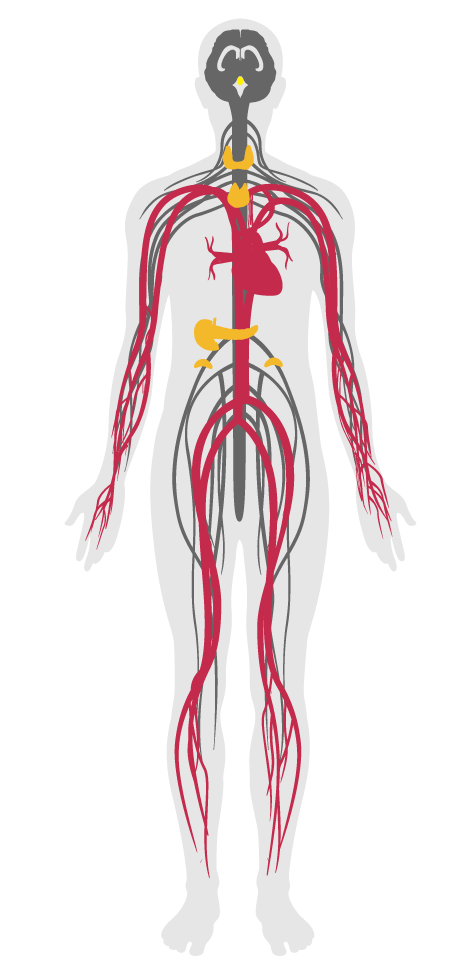Internally generated noise
- 72 Accessible design
- 73 Ergonomics: visual and physical
- 74 Exterior noise intrusion
- 75 Internally generated noise
- 76 Thermal comfort
- 77 Olfactory comfort
- 78 Reverberation time
- 79 Sound masking
- 80 Sound reducing surfaces
- 81 Sound barriers
- 82 Individual thermal control
- 83 Radiant thermal comfort
- P4 Impact reducing flooring
75. Internally generated noise
To reduce acoustic disruptions and increase speech privacy by creating an acoustic plan and limiting internal noise levels.
Electronics, HVAC systems, mechanical equipment and other noise-emitting office devices, as well as occupants themselves can be major sources of indoor noise. As offices and workspaces are increasingly designed to promote employee interaction, occupants can experience decreased levels of privacy and acoustic comfort, especially when users with different job types share a space. Office noise can lead to decreased productivity, especially in open-plan offices where aural distractions and interruptions from other employees are frequent. Additionally, studies show that exposure to noise generated within the building can lead to reduced concentration and mental arithmetic performance, and increased distraction due to reduced speech privacy.
An acoustic plan is developed that identifies the following:
The mechanical equipment system meets the following requirements once interior build-out is complete in the following spaces:
The following requirement is met in the bedrooms, dining rooms, living rooms, and studies:
The following requirements are met:
The following requirements are met in all bedrooms, dining rooms, living rooms, and studies for all fans except HVAC air handlers and remote-mounted fans that are located outside habitable spaces with at least 1.2 m [4 ft] of ductwork between the fan and the intake grill:
Each regularly occupied space must meet the following noise criteria while unoccupied, as measured in the geometric center of the room:
If music is played in the space, sound levels may not exceed the following:

Applicability Matrix
| Core & Shell | New & Existing Buildings | New & Existing Interiors | |
|---|---|---|---|
| Part 1: Acoustic Planning | - | P | P |
| Part 2: Mechanical Equipment Sound Levels | O | P | P |
| Commercial Kitchen | Education | Multifamily Residential | Restaurant | Retail | |
|---|---|---|---|---|---|
| Part 1: Acoustic Planning | P | P | - | P | P |
| Part 2: Mechanical Equipment Sound Levels | - | P | - | - | - |
| Part 3: Mechanical Equipment Sound Levels in Sensitive Rooms | - | - | O | - | - |
| Part 4: Best-Practice HVAC Installation | - | - | O | - | - |
| Part 5: HVAC Sound Ratings | - | - | O | - | - |
| Part 6: Noise Criteria in Schools | - | P | - | - | - |
| Part 7: Disruptive Music Limitation | - | - | - | P | - |
Verification Methods Matrix
| Letters of Assurance | Annotated Documents | On-Site Checks | |
|---|---|---|---|
| Part 1: Acoustic Planning | Architect | ||
| Part 2: Mechanical Equipment Sound Levels | Performance Test | ||
| Part 3: Mechanical Equipment Sound Levels in Sensitive Rooms | Performance Test | ||
| Part 4: Best-Practice HVAC Installation | Contractor | ||
| Part 5: HVAC Sound Ratings | MEP | ||
| Part 6: Noise Criteria in Schools | Performance Test | ||
| Part 7: Disruptive Music Limitation | Visual Inspection |
| 75.1.a |
The General Services Administration's Sound Matters recommends to carefully consider the effect on neighboring workstations when locating supporting activities, i.e. copier rooms, coffee bars, entries to conference rooms. |
| 75.2.d |
The General Services Administration's Sound Matters recommends a background noise maximum of NC 20 for teleconference facilities. |
| 75.2.b |
The General Services Administration's Sound Matters recommends a background noise maximum of NC 35 for private offices. |
| 75.2.a |
The General Services Administration's Sound Matters recommends a background noise maximum of NC 40 for open plan workspaces. |
| 75.6.a |
ASHRAE recommends a noise criteria (NC) less than 35 in school classrooms. |
| 75.3.a |
The LEED v4 credit for Acoustic Comfort for homes sets 2 options for the LEED point, one of which requires that the max. background noise level due to interior noise sources cannot exceed 40 dBA based on peak hr Leq tested in acoustically sensitive rooms. |
| 75.4.c |
The LEED v4 credit for Acoustic Comfort for homes sets 2 options for the LEED point, one of which requires that damper flaps close fully, with no visible airspaces around the flap. |
| 75.4.a |
The LEED v4 credit for Acoustic Comfort for homes sets 2 options for the LEED point, one of which requires that ducts are securely attached with no loose connections between sections of ductwork. |
| 75.4.b |
The LEED v4 credit for Acoustic Comfort for homes sets 2 options for the LEED point, one of which requires that the fan housing is securely anchored. |
| 75.5.b |
The LEED v4 credit for Acoustic Comfort for homes sets 2 options for the LEED point, one of which requires that continuous ventilation fans have a max. sound rating of 1.5 sones in acoustically sensitive rooms. |
| 75.5.a |
The LEED v4 credit for Acoustic Comfort for homes sets 2 options for the LEED point, one of which requires that intermittent fans have a max. sound rating of 1.5 sones (unless their max. rated airflow exceeds 400 cfm) in acoustically sensitive rooms. |
| 75.7.a |
The NYC DEP's Guide to the NYC Noise Code states that music heard on the street may not exceed 7 decibels over the ambient sound level, as measured on the street or public right-of-way 15 ft or more from the source from 10PM-7AM. |
